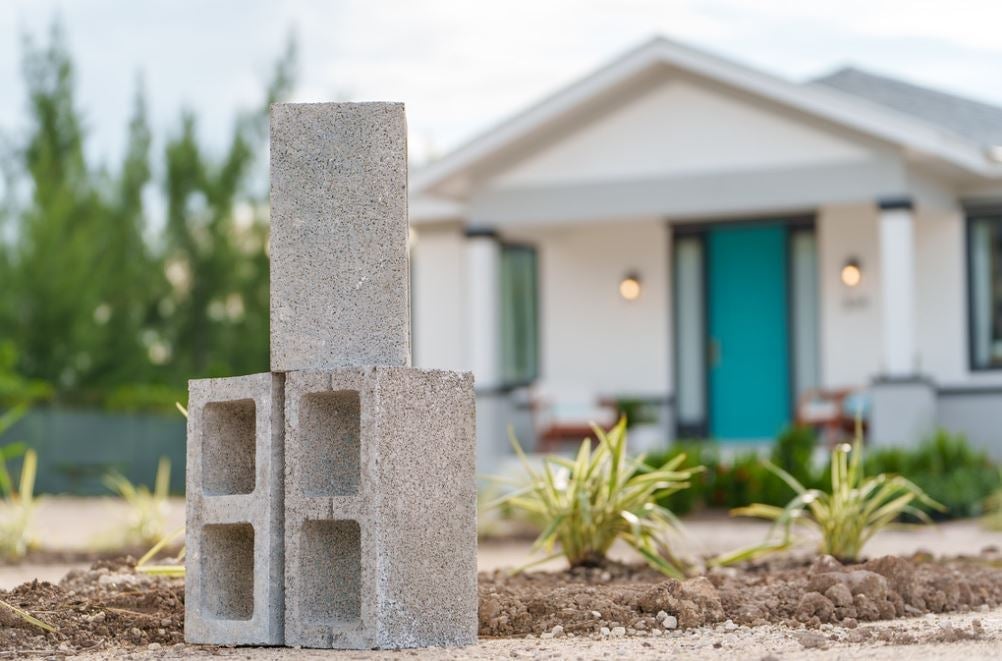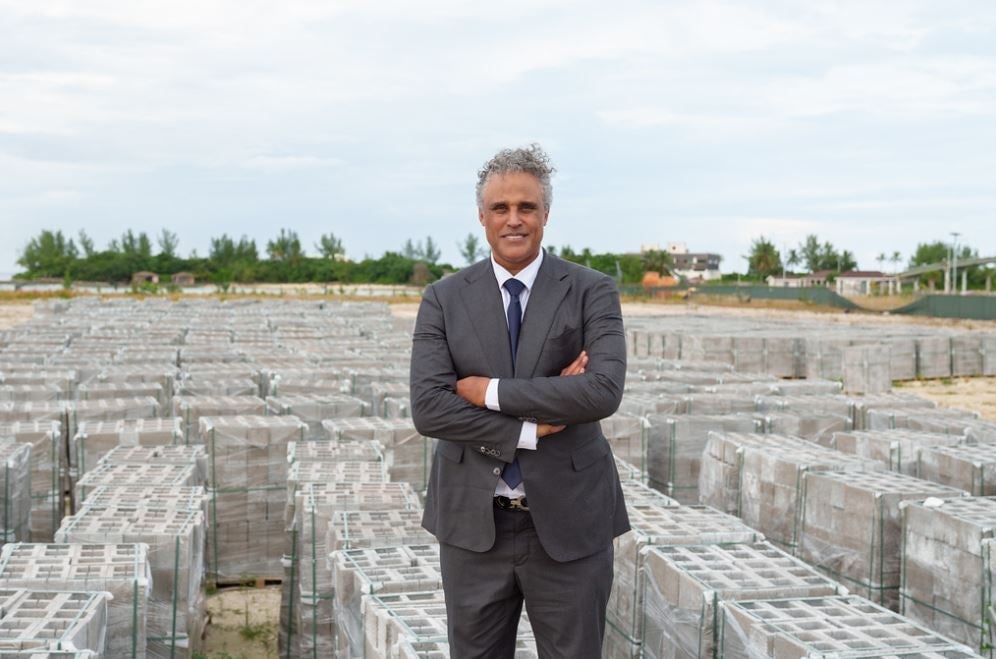The Bahamas is introducing the world's first carbon-negative construction tech
A new home debuted by a sustainable materials firm can remove as much carbon as 5,200 trees

The Bahamas has started pioneering the use of a construction material that naturally absorbs carbon from the atmosphere, a huge leap towards replacing carbon-intensive Portland cement and reducing emissions.
Suggested Reading
A global first, the material is made from organically recycled ingredients once considered industrial waste products, according to Partanna Global, the firm leading the innovation in the island nation. Among them: steel slag, a byproduct created when iron is turned to steel, and desalination waste, a chemical left behind after ocean saline water is made usable for drinking and agriculture. Using the subsequent material, this week Partanna debuted the world’s first carbon-negative home in Nassau.
Related Content
As the world struggles to fight climate change, the innovation could be used on large-scale construction sites to form a natural carbon sink; it can also influence carbon credit policies around the world. And for small island states that bear the brunt of hurricanes and floods, the material might offer a climate-resilient solution that also supports reliable, affordable housing.
Partanna says its green-homes project using the construction material will build 1,000 houses in partnership with the Bahamian government as part of an agreement signed at COP27. Some 29 real estate projects will follow in 2024.
How the carbon-negative material works
Partanna co-founder and CEO Rick Fox—who some may also recognize as a former NBA player—told Quartz that the new material is designed to form chemical compounds that capture atmospheric carbon dioxide the same way trees do.
“We cure this mixture at normal room temperature and avoid the energy-intensive clinker process associated with cement production,” Fox said. “As the carbon dioxide dissolves into our mix, it helps create a novel type of binding agent that serves the same purpose as traditional cement.” It’s these reactive compounds that are used to continue absorbing carbon throughout a building’s lifecycle.
Brine is used to activate the binder using a method inspired by natural pozzolans, which include rocks of volcanic origin and sedimentary clays and shales. The process creates chemical compounds that minimize the amount of carbon dioxide in the air surrounding buildings.
While traditional concrete weakens when exposed to seawater, Partanna says its material strengthens upon contact due to its use of brine, making it “25% stronger than cement.” This resilience, Fox said, makes it perfect for low-lying coastal communities on the frontline of climate and water-related hazards. This means even if that structure is demolished, the material “holds onto the carbon and can be reused as an aggregate to make more of the alternative concrete.”
According to Partanna’s website, a 1,250 square feet home can remove 182.6 metric tons of carbon dioxide from the air, “equivalent to the annual carbon absorbed by 5,200 mature trees.”

The company says on its website its material yields high-value, Verra-certified carbon credits and has achieved Interrek certification, affirming its concrete’s compliance with global standards.
Traditional cement is hurting the world
Not counting water, cement is the most widely-wielded substance on the planet. The world uses more than 30 billion tons of concrete on construction sites every year, and as the demand for it continues to rise, it derails efforts to achieving the Paris Agreement’s target of reducing global warming.
One ton of traditional cement produces about 0.9 tons of carbon emissions, resulting in approximately 8% of the world’s anthropogenic carbon emissions, and about 25% of all industry carbon emissions. If it were a country, cement would be the world’s third-largest carbon emitter after China and the United States. In contrast, cutting emissions from cement and concrete production by up to 25% by 2030 is estimated to avoid about five billion tons of carbon.
The Bahamas is tackling climate change itself
The Bahamas, itself a perennial victim of climate change devastations, believes the new cement innovation will help it mitigate climate-related threats to human life.
In a release, Bahamian prime minister Philip Davis said that the launch of the technology “is a testament that the answers to our global crises often come from those most affected.” Climate change is only hastening these crises, with dire consequences for the island nation. After 2019's cataclysmic Hurricane Dorian, for one, the Bahamas suffered $3.4 billion in loss and damage—equal to nearly 25% of its GDP.
At the time, Davis called for help from richer nations. But while wealthy nations and private enterprises pledge to help developing countries cope with climate change, many of those promises don’t come to pass—and as they greenwash their role in the climate crisis, it’s impoverished states who suffer. As Partanna debuted its first carbon-negative home, Davis emphasized his nation’s role in pioneering climate resilience. He was, he said, “immensely proud that it is a Bahamian entrepreneur leading this revolution.”
